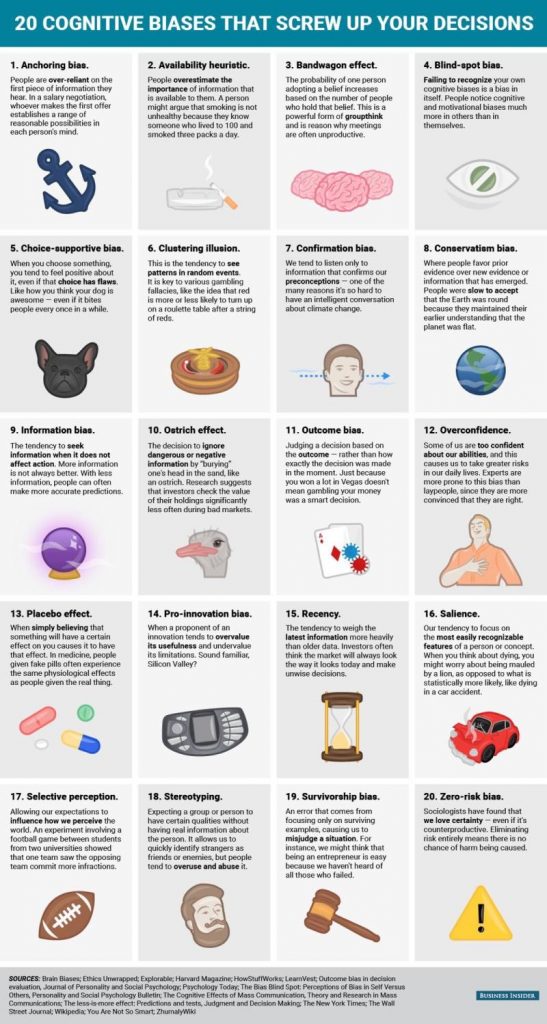Let’s look at ten basic principles of football and see how they connect with complexity. Here I use the term complexity as it is used in information theory and cybernetics. A cybernetic system has a higher complexity when there is more variation. With less variation there is less complexity. Variation is a measure for the number of options there are.
In terms of football: the more options you have, the more complex the situation becomes because it becomes harder to make decisions. That does not mean that it becomes more difficult to play. In fact, most of the time, having more options makes it easier to execute the decision you make. Because you have more options, it becomes more difficult for your opponent to anticipate your actions. You and your team become less predictable. So the more options you have, the less your opponent is able to resist you. Thus play becomes easier for you. To conclude with more complexity of the decision making process becomes harder and the decision executing process becomes easier.
Width
Width is an attacking principle. With more lateral options, your opponent needs to stretch their defenders to close all avenues of attack. That means less defenders in the space of your attackers. Less defenders means more options. So width is a good principle of attack because it increases complexity. With more width your attackers get more options. The attack becomes less predictable and it becomes more difficult for your opponent to defend against you.
Support
Players without the ball need to support the player with the ball. If the supporting players create opportunities for the player with the ball to pass, then options increase again and so does the complexity. If supporting players get close to the player with the ball but not too close, passing opportunities increase, but also the ratio between attackers and defenders in the same space tilts to favor the attack. The more options, the more complexity, the less predictability and the better your chance to score. If supporting players get too close to the player with the ball, then they start to limit the space available to that player and they start to limit the options he has. On the other hand if a supporting player runs into an open space and pulls a defender with him, he is creating more options for the player with the ball because there are less defenders to limit his options.
Penetration
Support and width are attacking principles that a team can always employ independent of your opponent . Penetration is more of a goal that the team tries to achieve. Yet, your opponent can prevent you from penetrating their defensive lines. The reason why penetration is desirable, is that when you penetrate the opposing defense you are able to get the ball under your control in a space that has less or no defenders. That in turn increases your options, increases complexity and increases your chances to score.
Mobility
If your players are staying at the same spot on the pitch, it becomes a lot easier for your opponent to limit the options of those players. Your opponent can block pass lines or limit the space your player is. Resulting in a decreasing number of options static players have. When your players keep moving around, it becomes more difficult to block pass lines and limit the space your players have. Preventing the decrease of options and thusly maintaining the number of options your currently has, make sure that your team is not forced to play in more and more predictable patterns. Of course, when mobility is used to support the player with the ball or penetrate the defensive lines, options increases.
Creativity
A creative player has more variation in his behaviors. His play becomes less predictable because he has a larger palette to choose from. Besides having more options, a creative player also needs to have flexibility to actually use all available options to him. Finally, a creative player also must have the technique to execute the decision correctly. So adding creative players to your team automatically increases the options your team has. Nevertheless, as most of the additional options are often quite difficult to execute correctly, the risk of losing the ball also increases.
Yet, there is another source of creativity that is not linked to individual players and that is the team itself. As long as the team plays in a way that creates more options, creativity will follow automatically. We have already seen that more options, leads to more unpredictability. And creativity is defined in football as doing something unpredictable. So even without creative players, the team can still play in a way that is less predictable.
Compactness
The less space between defending and attacking lines, the more compact a team is. Compactness is a defensive principle, because the aim of compactness is to try to have as many defending players as possible in the smallest possible space in order to prevent the opponent getting significantly closer to the goal with the ball. The more defending players there are in a small space, preferably the space where the ball is, the less options the attacking team has. With less options, the level of complexity decreases, so the game becomes easier. Thus it also becomes easier to defend. With less complexity there is also less risk. So the game becomes less risky. Less complexity also means that the opponent is easier to predict, again making it easier to capture the ball.
It really doesn’t matter whether the compact block is close by the keeper or high up on the pitch. Playing high up the pitch with a compact block, makes it easier for the opponent to try to penetrate the defending block by passing in the space behind it. But that is also predictable and the defenders can be trained to anticipate that move to counter it.
Interruption
Although it is of course best to regain control over the ball, interrupting the attack of the opponent is also good to do. Football is not only limited in space, it is also limited in time. The more time there is, the more options there are for the attacking team to score. The less time, the less options. So interrupting the effective use of time also limits the options for the opposing team. Of course, this is especially handy if you are actual ahead in the match. Time is a sword that cuts both ways. As you are limiting the amount of time the opponent has, you are also limiting the amount of time your team has as soon as it regains possession.
If time is running out, you see the team that is about to lose or who doesn’t want to draw, play more and more predictable. That doesn’t automatically mean that the team that is winning, will definitely win in the end. That also has to do with the game intelligence and technique of the players on the pitch. But it does indicate how important it is to score more goals than your opponent. The moment you do, not only do the number of ways they can win decrease (for instance they can’t win 0-1 anymore), but interrupting their attack costs them time. Which limits the options they have.
Less space and time
Pressure doesn’t really exist in football. There is only the amount of space and time an individual player gets to make and execute decisions. The less space and time, the harder football becomes. Unless, there is too much time and space and players start to overthink the situation. In that case that particular player can’t handle the highly increased level of complexity of his situation and he blunders. But in most cases, the less space and time, the harder it becomes.
The reason why less space and time, make it harder to play, is because as a player you get less options. So because you have less options and your actions will become more predictable, it becomes harder to beat your opponent. Of course, when you are a defender and you want to capture the ball, it is great when the attacker has less options. The more predictable the attacker is, the easier it is to win the ball.
Patience
Patience is a virtue. Patience itself won’t decrease or increase complexity. Yet, patience is needed to wait for the moment complexity has dropped so much that the behavior of the attackers has become so predictable that there is a high chance of capturing the ball. If you act too quickly as a defender, before you have shut down as many options as possible, then there are still options open for the attacker. The more options the attacker has, the smaller the chance you have to predict the behavior of the attacker and capture the ball. So patiently abiding your time till the level of complexity has dropped enough, is often the best defending strategy.
Predictability
Due to the close reverse connection between complexity and predictability, I have already explained everywhere how defending is a matter of decreasing complexity in order to increase predictability, whereas the aim of attacking is to increase complexity in order to increase unpredictability. Besides everything I described so far, the defending team can also specific strategies to increase predictability. For instance, a manager can use data analysis to find out which attacker of the opponent most often loses the ball. Or is the least creative and the most predictable. Then the team can employ a strategy where the opponents options are limited when it comes to passing to other attackers, so the ball gets passed to the attacker most likely to lose the ball.





